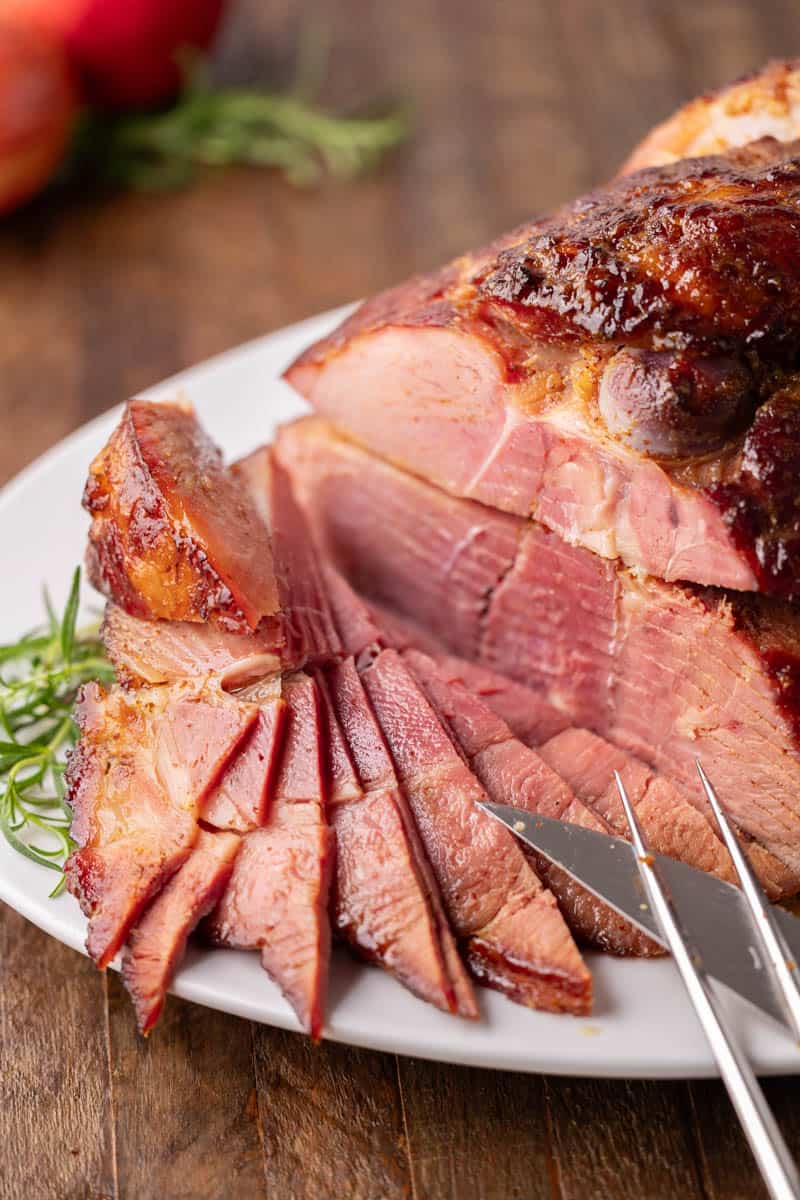Master the art of spiral ham with a fusion of rich flavors, complemented by your choice of luscious glazes.
Spiral ham stands as a testament to culinary elegance, merging the tenderness of perfectly cooked meat with the rich symphony of flavors from its glaze. Celebrated in many cultures, this dish brings families together, be it during the holidays or family dinners. Whether you’re a spiral ham first-timer or looking to refine your technique, this guide will help you on your journey towards ham perfection.
Frequently Asked Questions
A spiral ham is pre-sliced in a spiral fashion, allowing for even cooking and easy serving.
Absolutely! Many hams come with their glaze packets, which are tailored for that specific product. Feel free to use it or opt for one of our homemade glazes.
While not strictly necessary, a glaze enhances the flavor profile of the ham, giving it that signature caramelized outer layer.
You absolutely can!
Making this in the slow cooker requires some liquid, so you’ll need to start by adding 1/2 cup of apple juice into the bottom of your slow cooker. Then, add your ham, cut side face-down. Pour half of the glaze over the ham, and make sure to get some of that glaze in between the layers. Cover and cook on low for 4-5 hours.
See our full guide on cooking ham in a slow cooker!
Recommended Glazes
Each glaze brings a distinct flavor profile to your spiral ham:
- Orange Balsamic Glaze: A harmonious blend of tangy and sweet, the orange juice provides a citrusy punch, while balsamic vinegar offers a depth of flavor.
- Brown Sugar Dijon Glaze: This glaze is a delightful balance of sweetness from the brown sugar and a slight piquant touch from the dijon. The apple juice rounds it off with a gentle fruity note.
Substitutes
- Brown Sugar: honey can be a suitable substitute for brown sugar.
- Dijon Mustard: If you don’t like dijon, you can use a milder mustard or simply omit it.
Troubleshooting
- Overcooking: One of the most common mistakes. If the ham turns out dry, consider serving with a sauce or gravy to add moisture.
- Uneven Glazing: To avoid this, ensure the glaze is spread evenly, and baste regularly.
- Not Thawing Properly: This can lead to uneven cooking. Always thaw your ham in the refrigerator well ahead of cooking.
Food Safety Tip From the Chef
When cooking your spiral ham, ensure the internal temperature reaches 140°F, especially if it’s precooked. Using a meat thermometer can provide an accurate reading. This ensures that the ham is both delicious and safe to eat.

Storage, Freezing & Reheating Instructions
Leftovers? No problem. Store your ham in an airtight container in the refrigerator for up to 5 days. For longer storage, consider freezing portions in freezer bags, ensuring all air is removed. When reheating, thaw in the refrigerator overnight. Warm it in the oven at a lower temperature, around 275 degrees Fahrenheit, until warmed through.
Remember, the key is to retain the ham’s moisture, so consider covering it with foil during reheating.
Don’t let your leftovers go to waste!
Trending Products














